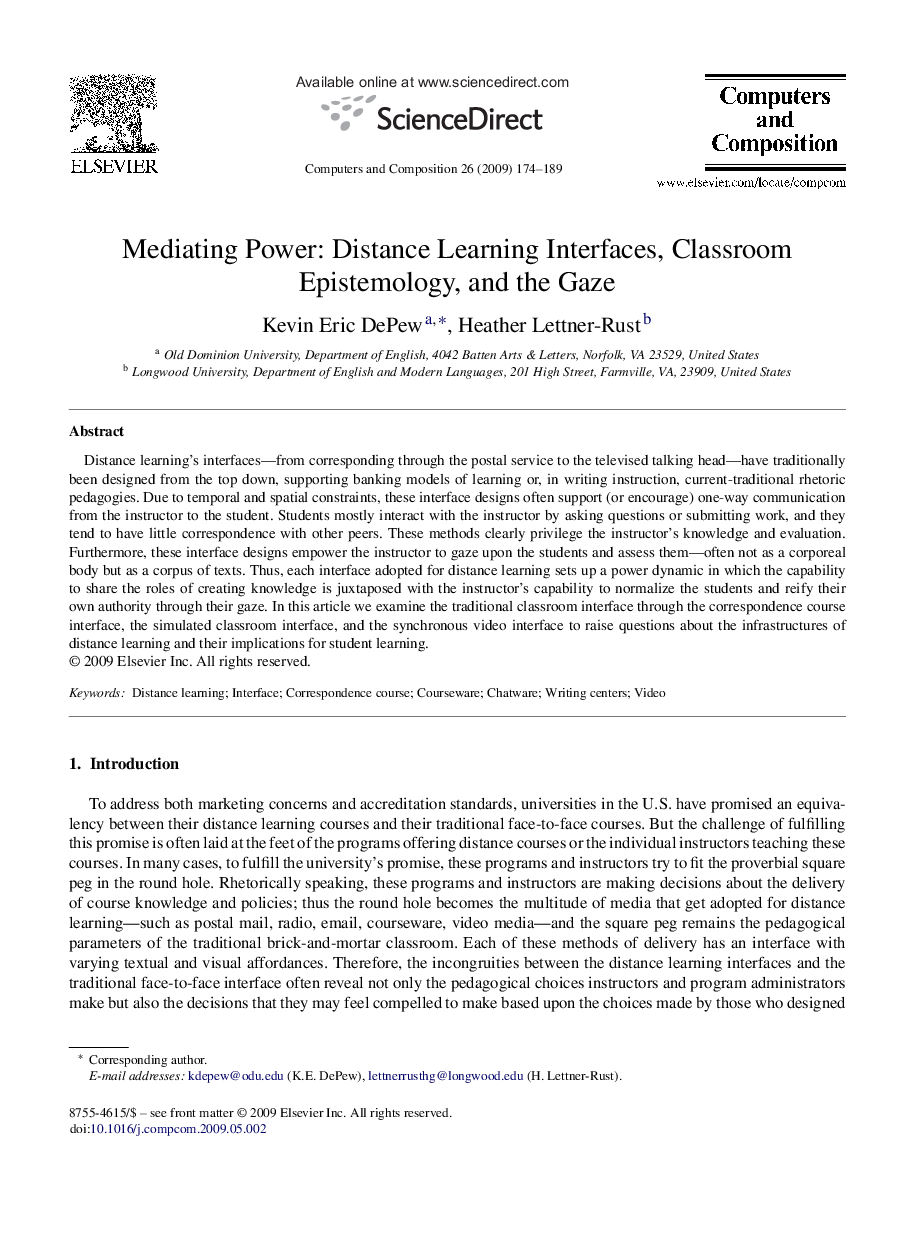| Article ID | Journal | Published Year | Pages | File Type |
|---|---|---|---|---|
| 347933 | Computers and Composition | 2009 | 16 Pages |
Distance learning's interfaces—from corresponding through the postal service to the televised talking head—have traditionally been designed from the top down, supporting banking models of learning or, in writing instruction, current-traditional rhetoric pedagogies. Due to temporal and spatial constraints, these interface designs often support (or encourage) one-way communication from the instructor to the student. Students mostly interact with the instructor by asking questions or submitting work, and they tend to have little correspondence with other peers. These methods clearly privilege the instructor's knowledge and evaluation. Furthermore, these interface designs empower the instructor to gaze upon the students and assess them—often not as a corporeal body but as a corpus of texts. Thus, each interface adopted for distance learning sets up a power dynamic in which the capability to share the roles of creating knowledge is juxtaposed with the instructor's capability to normalize the students and reify their own authority through their gaze. In this article we examine the traditional classroom interface through the correspondence course interface, the simulated classroom interface, and the synchronous video interface to raise questions about the infrastructures of distance learning and their implications for student learning.
